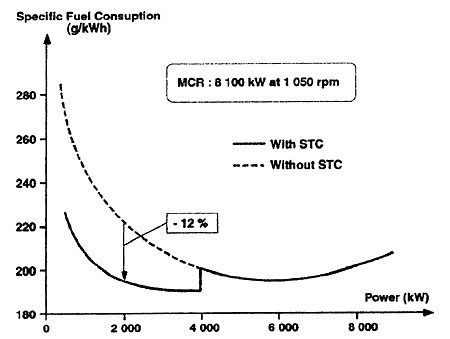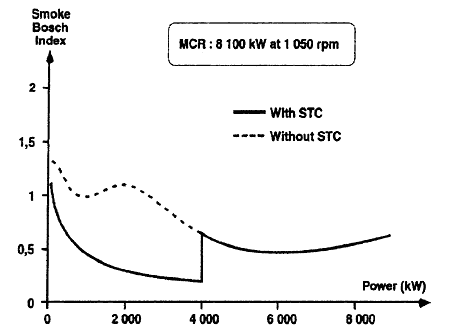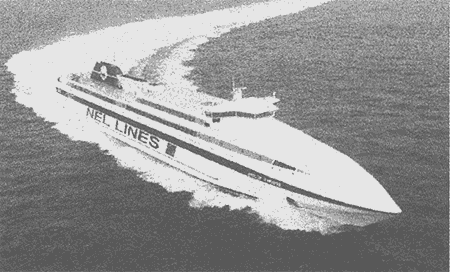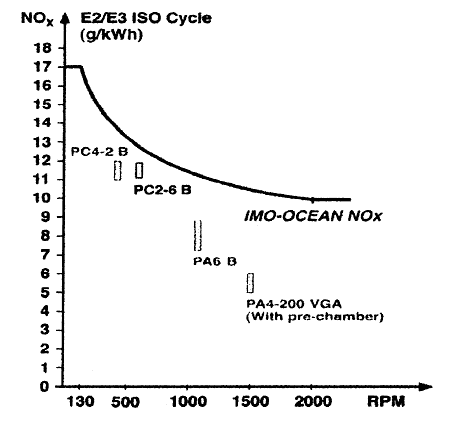The following multiple benefits are acquired with this Sequential Turbocharging System (STC):
- high torque (and power) ability at reduced engine speed.
- fuel economy (Fig.11)

Fig.11 - Specific fuel consumption along propeller law
- invisible smoke emissions over a wide working range (Fig.12)

Fig.12 - Smoke emission along propeller law
- reduced exhaust temperatures
- lower thermal stresses, at par loads, in the engine parts surrounding the combustion chamber.
As for the PC2.6 B engine development, exhaustive validation tests have been performed on an 8 cylinder prototype with low cycle and high cycle fatigue tests carried out with 15% overload and lasting 600 hours. Furthermore, 800 additional hours have been performed on the first 20 cylinder production engines with load profiles corresponding to severised actual service operation.
In May 2000, 9 engines have been ordered out of which 4 just started operation on a "Corsaire 12000" high speed ferry type (Fig.13). Following engines will be installed in a smaller "Corsaire 10000" (3 engines) and a larger high speed (42 knots) "Corsaire 14000" (2 engines and 2 × LM2500 + gas turbines) ships.

Fig.13 - Car-Ferry Corsaire 12000 (4 × 20 PA6 B STC)
4. EMISSIONS
A11 PA and PC engines recently developed by SEMT cope with IMO 2000 regulations on NOx emissions (Fig.14) without compromising fuel efficiency. However, submissions already lodged at the IMO for further reductions in NOx and local regulations for sea traffic close to some high population density lands require the use of special dedicated systems.

Fig.14 - IMO - NOx emission limits
It is well known that the use of water in the diesel engine process is an effective way to reduce NOx emissions with generally an additional beneficial effect on smoke index levels. The effect of water is mainly a reduction of local high peak temperatures, which are generated during the combustion process and are responsible of the nitrogen oxides formation.
The introduction of water in the cylinder has been achieved through different systems like:
- injection of a water emulsified fuel,
- direct water injection in the cylinder through a dedicated water injection system,
- stratified fuel/water injection.
All of them require more or less sophisticated injection systems and cannot reach more than 50% NOx reduction due to the practical limitation of the water quantity introduced in the cylinder.
Another process is to mix water with the air prior to its introduction in the cylinders. As no liquid water is wanted, the idea is to vaporise as much water as possible, which means to introduce air in the cylinders with humidity very close to saturation.
BACK CONTENTS NEXT